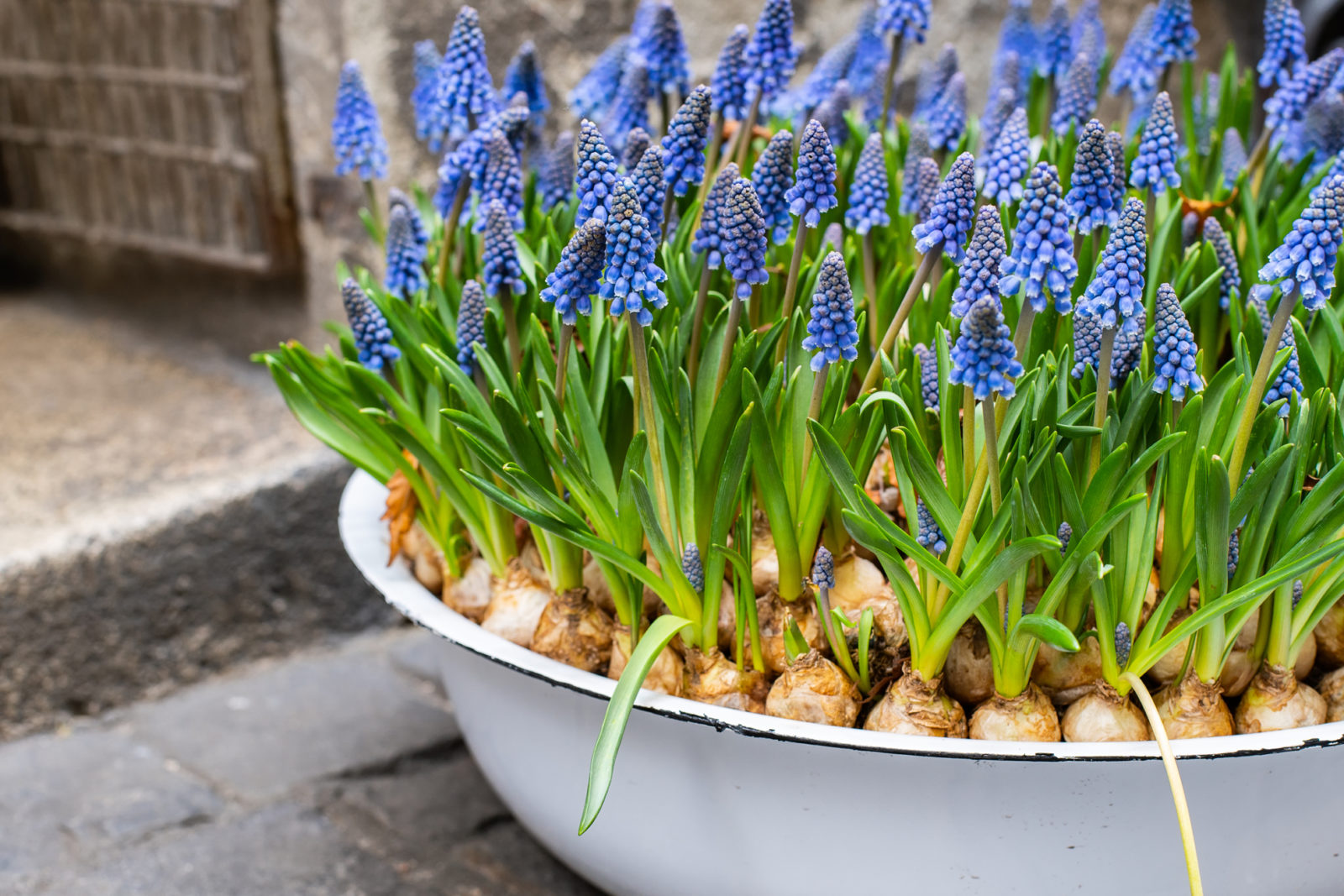Troubleshooting When Your Muscari or Grape Hyacinth Has Leaves But No Flowers
Muscari, also known as grape hyacinth are early spring-blooming bulb flowers that add a pop of color with their purple, blue or white blossoms. Their slim grass-like foliage also provides nice texture contrast in flower beds and borders. However, some gardeners experience the frustration of abundant muscari foliage but no flowers.
What causes muscari to produce only leaves and no blooms? Here are some potential reasons and solutions to get your plants flowering again:
Incorrect Growing Conditions
Muscari thrive best in full sun to partial shade. Too much shade, especially from tree roots or buildings, can inhibit flowering. Check that your plants get at least 4-6 good hours of sun daily.
These bulbs also prefer well-drained soil Heavy, dense clay can lead to poor drainage and puddling that bulbs dislike Incorporate organic material like compost to improve moisture and aeration. Or plant muscari in raised beds or rock gardens with fast drainage.
Overcrowding
When muscari are planted too close together, they compete for resources and space. This stress may prevent flowering as the bulbs focus energy on leaves instead. Space bulbs 5-6 inches apart and also avoid planting annuals or perennials too near.
Overfeeding
While muscari need lean soil, excessive nitrogen fertilization can promote leaf growth over flowers. Use a balanced fertilizer at planting and in fall. Avoid high-nitrogen formulas.
Depth Issues
If planted too shallow, bulbs may dry out or freeze. Set bulbs 4-6 inches deep. Planting too deep can also reduce flowering. Check depth if you’ve added mulch or soil on top over time.
Pest or Disease Problems
Bulb mites, nematodes, fungal issues like botrytis and southern blight can infect bulbs, damaging their ability to bloom. Discard any soft, discolored bulbs. Treat diseases with appropriate fungicides. Solarizing soil can reduce pests.
Insufficient Chilling
Muscari need a cold period of 12-15 weeks below 45°F to flower properly. Insufficient chilling due to warm winters may prevent blooms. Store pots in a cold frame or unheated garage if needed.
Age and Deterioration
Bulbs naturally divide and multiply over years. But after 3-5 years, the bulbs may become overcrowded and stressed. Flowering decreases while foliage increases. Dig up and divide congested clumps, replanting the healthiest bulbs.
Purchasing Bad Bulbs
Sometimes poor quality or old bulbs won’t bloom well. Always buy plump, firm bulbs from reputable sources. Check for signs of mold, damage or shriveling.
Deadheading Issues
Allowing old flowers to form seeds takes energy away from next year’s bloom. Cut or snap off faded blooms but leave the foliage intact.
Incorrect Variety
Some muscari varieties like ‘Valerie Finnis’ and ‘Peppermint’ are bred for showy sterile bracts rather than flowers. Read descriptions carefully so you get a truly flowering type.
Solutions to Get Muscari Blooming Again
Now that you know some potential causes of lack of flowers, here are tips to get your muscari flowering abundantly again:
-
Improve drainage and light exposure if needed
-
Thin congested clumps and replant healthy bulbs
-
Fertilize with balanced plant food to support buds
-
Rule out pests and diseases – treat if found
-
Provide sufficient winter chilling
-
Renew bulbs after 3-5 years
-
Buy the best quality bulbs available
-
Deadhead to prevent seed formation
-
Choose true flowering types like ‘Blue Spike’, not sterile bract varieties
-
Consider forcing some bulbs indoors for early blooms
-
Be patient – bulbs may take 2-3 years to adjust and thrive
Have realistic expectations, as grape hyacinth foliage often emerges first before the flowers open 6-8 weeks later. But if your plants repeatedly produce only leaves year after year, use these troubleshooting tips to get your muscari blooming happily again. With the right conditions, you’ll be rewarded with a cheerful spring display.
Start with a Better Bulb
When you compare two muscari bulbs side by side, it’s easy to see the difference in quality. The bigger the bulb, the more food thats stored inside. A larger bulb will give you a stronger plant with more flowers. Longfield Gardens supplies plump, 8/9 cm muscari bulbs to ensure you enjoy the biggest, brightest blooms.
Your Guide to Planning, Planting, and Growing Muscari
Spring gardens always look better when they include muscari. These cute little cobalt blue flower clusters complement every other color in the rainbow. They are only 6 to 8 inches tall, so they are easy to work into any garden or landscaping.
Muscari are also called grape hyacinths, which is a great name for their flowers, which are tight clusters of fat little bells that smell like grape juice. Muscari bloom in mid-spring, at the same time as daffodils and tulips. Deer and rodents don’t bother them much, and once they’re planted, the bulbs grow quickly and bloom again and again.
Aftercare For Hyacinths Grown In Pots! What To Do When Flowering Is Over BG
FAQ
Why do bulbs produce leaves but no flowers?
Why aren’t my grape hyacinths blooming?
What months do Muscari flower?
- The Ultimate Guide to Growing Strawberries in Raised Beds - August 8, 2025
- No-Dig Garden Beds: The Easiest Way to Grow a Beautiful Garden - August 6, 2025
- How to Protect and Preserve Wood for Raised Garden Beds - August 6, 2025

